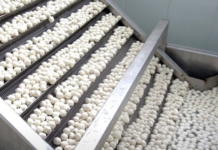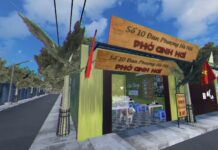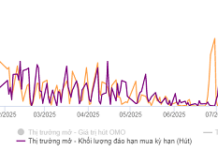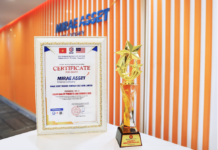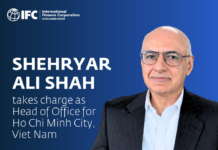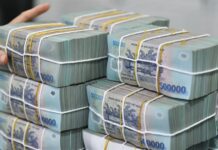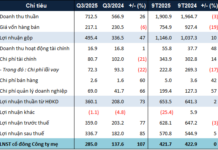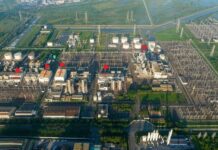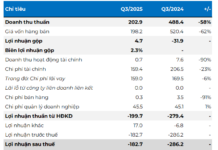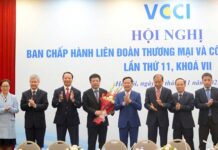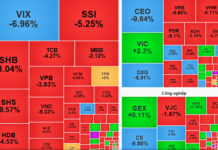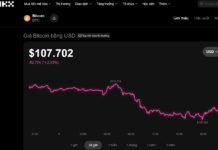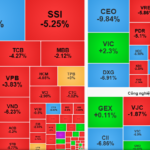According to Mauro Gasparotti, Director of Savills Hotels, the resort real estate market is showing positive signs as demand is gradually recovering at a stable pace, including the domestic and international markets, which helps consolidate confidence in the resort industry. Savills Hotels has also noticed many projects that are in the process of restarting, as our team has received many requests for feasibility studies and selection of hotel operators in the past few months.
According to Mr. Mauro Gasparotti, with the advantage of connectivity infrastructure and diverse tourism products and accommodation options, Danang is expected to continue leading the recovery process. Destinations familiar to domestic tourists such as Quy Nhon or Phu Yen are also seeing increasing number of planned projects, while these areas are also focusing on developing transportation infrastructure and high-end accommodation products to attract more international visitors.
Meanwhile, the luxury hotel market in Ho Chi Minh City is expected to maintain its competitive advantage for the next few years due to limited new supply. This is regrettable because Ho Chi Minh City still needs more diverse types of accommodation to meet the needs of different types of guests such as business travelers combined with leisure, millennial guests, …

Mauro Gasparotti, Director of Savills Hotels
For the hotel and serviced apartment segment, the market is seeing an increasing number of projects in the planning stages in Hanoi. In addition, the midscale – upper midscale hotel segment is also experiencing good growth rates in nearby locations with industrial areas.
For the resort product, tourists are increasingly interested in and have higher requirements for the combination of wellness and sustainable development elements. As a result, the trend of integrated wellness resorts with models such as onsen or medical tourism is attracting more attention from investors. In addition, the luxury segment continues to receive much attention from investors.
Furthermore, we have also noticed a vibrant market for sales & mergers. In addition to ongoing projects with stable cash flow, some previously delayed or unfinished projects are currently being transferred to new investors for continued development and completion of the projects.
Regarding residential real estate, Matthew Powell, Director of Savills Hanoi, said that in recent years, luxury residential projects in major markets such as Hanoi and Ho Chi Minh City have still attracted certain attention from investors. Even, this attention has also been extended to some coastal resort markets such as Nha Trang and Da Nang.
“However, it should be understood that the main demand of the market at the moment is not really in the high-end or luxury segment. Therefore, to meet different housing needs, the market needs to diversify its products. Diversification comes from differences in design, construction techniques and amenities. For residential or short-term or long-term rental tourism products, diversifying segments will open up more opportunities rather than focusing on developing luxury segments,” Matthew Powell said.

Matthew Powell, Director of Savills Hanoi
According to him, luxury products are often known for their scale and distinctive amenities. The emergence of luxury and high-end products is also a sign that the market is diversifying. However, the story of the market is still to be able to meet the real needs. When looking at the overall picture, the current actual demand comes from the mid-range / affordable segment, with the main target customers being young families, people who move to the city to work and desire to find a place for long-term settlement.
Therefore, investors need to consider the actual conditions of the market and diversify housing products, instead of introducing similar projects with limited facilities that do not provide comfortable living conditions.
Because projects that are well-planned, have good construction quality, and diverse amenities that are friendly to residents are usually more successful than projects that focus on large scale and high prices. All of these need to start from real needs and target markets, where quality, design and amenities are the top concerns.
In the industrial real estate market, Thomas Rooney, Senior Manager, Industrial Advisory Services, Savills Hanoi, said that in the key economic area in the North, Bac Ninh province stands out in attracting investment. According to statistics from the Bac Ninh Department of Statistics, in 2023, newly attracted FDI inflows into industrial parks in the province reached $1.104 billion (exceeding 163.7% compared to 2022). Bac Ninh not only attracts manufacturing and logistics businesses, but also foreign and domestic rental investors. Real estate investment activities are bustling throughout the province, especially in the Yen Phong area.
In addition, Vinh Phuc is also a notable market. Currently, there are many investment activities taking place quietly here, and there will be more information about foreign investors starting projects in Vinh Phuc in 2024.

Thomas Rooney, Senior Manager, Industrial Advisory Services, Savills Hanoi
The land use rate in southern Hanoi provinces such as Hung Yen and Ha Nam is showing extremely positive signals. Competitive land prices open up new opportunities for investment funds, helping them to take advantage of attractive profit opportunities. Besides, abundant labor force, close proximity to the main consumer market, convenient access to seaports, border gates and airports, and completed transportation infrastructure are also factors that enhance the attractiveness of this area.
In the near future, the markets that will see remarkable development in industrial real estate will be Group 2 provinces in the South of Hanoi such as Nam Dinh or Thai Binh. These provinces have been renowned for investing in the Textile industry, but in recent months have witnessed investment in higher-value industrial sectors.
For the field that attracts large investment in northern provinces, High-tech & Electronics is a field that has been continuously attracting investment from manufacturing suppliers for global technology giants. The signing of the International Trade Agreements, preferential investment policies of the government, and the overall economic landscape of Vietnam are the “magnets” attracting investment from a variety of industries to Vietnam. In terms of demand, the needs of businesses are quite simple, for example, export-oriented enterprises need good infrastructure to access large ports, borders, and airports, attractive tax incentives, and convenient locations close to supplier partners.
To start investing in industrial real estate effectively in Vietnam, Thomas Rooney suggests some considerations for investors. Specifically, firstly, understand the licensing process and the time to receive investment certificate. The licensing time may vary depending on each province and city.
Second, carefully research the recruitment context. Vietnam has strengths in labor, but there may also be challenges with skilled labor in certain areas.
Finally, avoid limiting yourself by only cooperating with one or two project investors. Investors should use the services of a reputable industrial brokerage company with experience to get a comprehensive overview of the market, access to potential investment options, and receive support in all technical analysis and protection of interests in trade negotiations.




